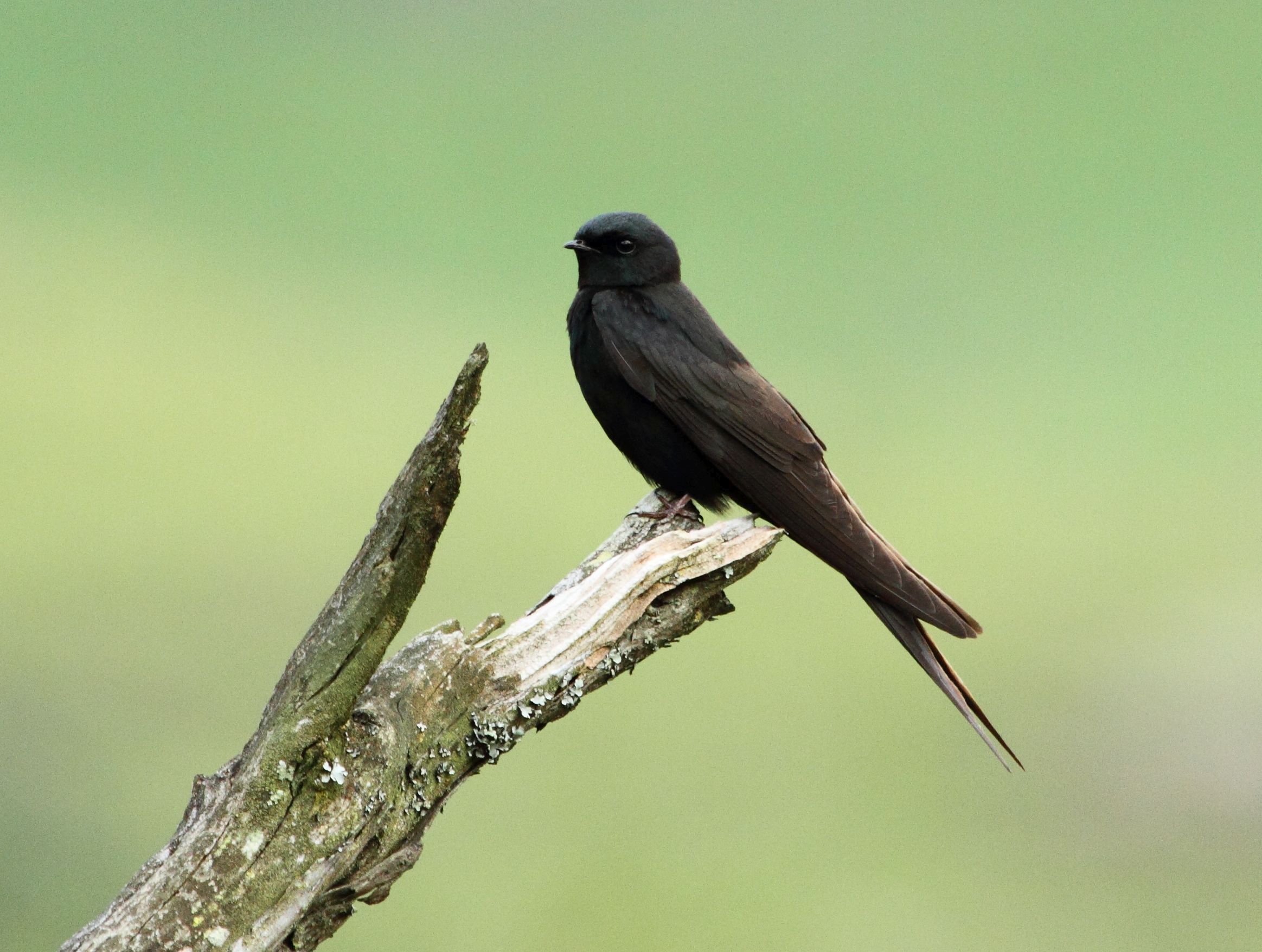|
Hirundinidae
The swallows, martins, and saw-wings, or Hirundinidae are a family of passerine songbirds found around the world on all continents, including occasionally in Antarctica. Highly adapted to aerial feeding, they have a distinctive appearance. The term "swallow" is used as the common name for '' Hirundo rustica'' in the UK and Ireland. Around 90 species of Hirundinidae are known, divided into 21 genera, with the greatest diversity found in Africa, which is also thought to be where they evolved as hole-nesters. They also occur on a number of oceanic islands. A number of European and North American species are long-distance migrants; by contrast, the West and South African swallows are nonmigratory. This family comprises two subfamilies: Pseudochelidoninae (the river martins of the genus ''Pseudochelidon'') and Hirundininae (all other swallows, martins, and saw-wings). In the Old World, the name "martin" tends to be used for the squarer-tailed species, and the name "swallow" for t ... [...More Info...] [...Related Items...] OR: [Wikipedia] [Google] [Baidu] |
River Martin
The river martins form a distinctive subfamily Pseudochelidoninae within the swallow and martin bird family Hirundinidae. The two species are the African river martin ''Pseudochelidon eurystomina'', found in the Congo and Gabon, and the white-eyed river martin ''Pseudochelidon sirintarae'', known only from one site in Thailand. These are medium-sized, largely black swallows that have a light buoyant flight and feed on insects caught in the air. They appear to be more terrestrial than other swallows, frequently walking rather than perching, and the white-eyed may be crepuscular. The African species excavates nest holes in sandy ridges in rivers, while the breeding locations and habits of the Asian bird are unknown. When the African river martin was first discovered in the 19th century, Gustav Hartlaub thought it was a roller, and later authors either placed it in its own family, or with the woodswallows. Study of the anatomy revealed that the species was closest to the swallow ... [...More Info...] [...Related Items...] OR: [Wikipedia] [Google] [Baidu] |
Progne
''Progne'' is a genus of passerine birds in the swallow family Hirundinidae. The species are found in the New World and all have "martin" in their common name. Taxonomy The genus ''Progne'' was introduced in 1826 by the German zoologist Friedrich Boie for the purple martin. The genus name refers to Procne (Πρόκνη), a Greek mythology, mythological girl who was turned into a swallow to save her from her husband. She had killed their son to avenge the rape of her sister. The genus contains nine species: References Progne, Hirundinidae Bird genera Birds of the Americas, Taxa named by Friedrich Boie {{Hirundinidae-stub ... [...More Info...] [...Related Items...] OR: [Wikipedia] [Google] [Baidu] |
Hirundo
The bird genus ''Hirundo'' is a group of passerines in the family Hirundinidae (swallows and martins). The genus name is Latin for a swallow. These are the typical swallows, including the widespread barn swallow. Many of this group have blue backs, red on the face and sometimes the rump or nape, and whitish or rufous underparts. With fifteen species this genus is the largest in its family. Taxonomy The genus ''Hirundo'' was introduced in 1758 by the Swedish naturalist Carl Linnaeus in the 10th edition of Systema Naturae, tenth edition of his ''Systema Naturae''. The genus name is the Latin word for a swallow. Linnaeus included eight species in the genus and of these William Swainson designated the barn swallow (''Hirundo rustica'') as the type species. Extant species The genus contains sixteen species. The linear sequence is based on two molecular phylogenetic studies published in 2005 and 2018. Extinct species There are at least two fossil species included in this genus: *† ... [...More Info...] [...Related Items...] OR: [Wikipedia] [Google] [Baidu] |
Pied-winged Swallow
The pied-winged swallow (''Hirundo leucosoma'') is a species of bird in the family Hirundinidae. It has distinctive steel-blue upperparts with white wing patches. It is native to parts of West Africa. Taxonomy The pied-winged swallow was described by the English ornithologist William Swainson in 1837 who introduced its current binomial name ''Hirundo leucosoma''. The specific epithet combines the Ancient Greek words ''leukos'', "white" and ''sōma, sōmatos'', "body". The species is monotypic. Evolutionarily, the pied-winged swallow occupies a basal position within the clade of ''Hirundo'' swallows and is most closely related to the pearl-breasted swallow (''Hirundo dimidiata''). Description The pied-winged swallow is about long with glossy steel-blue wings and head. Most of the underside of the bird is white, with additional white patches found on special wing feathers. The tail is also steel-blue, but has green reflections. Females and juveniles typically have shorter ta ... [...More Info...] [...Related Items...] OR: [Wikipedia] [Google] [Baidu] |
Psalidoprocne
The saw-wings, ''Psalidoprocne'', is a small genus of passerine birds in the swallow family. The common name of this group is derived from the rough outer edge of the outer primary feather on the wing, which is rough due to recurved barbs. The function of this is unknown. The birds are 11–17 cm long and black or black-and-white in colour. The genus has an African Range (biology), distribution and all species can be found foraging over forest and woodland. The last part of their scientific name comes from the eldest daughter of King Pandion of Athens, Procne, who was turned into a swallow after tricking her abusive husband. Species list There are at least five species of saw-wing. The black saw-wing has a large number of subspecies and many of these are sometimes considered to be separate species. The species, in taxonomic order, are: References Psalidoprocne, Birds of Sub-Saharan Africa {{Hirundinidae-stub ... [...More Info...] [...Related Items...] OR: [Wikipedia] [Google] [Baidu] |
Barn Swallow
The barn swallow (''Hirundo rustica'') is the most widespread species of swallow in the world, occurring on all continents, with vagrants reported even in Antarctica. It is a distinctive passerine bird with blue upperparts and a long, deeply forked tail. In English-speaking world, Anglophone Europe, it is just called the swallow; in northern Europe, it is the only member of family Hirundinidae called a "swallow" rather than a "Martin (bird), martin". There are six subspecies of barn swallow, which breed across the Northern Hemisphere. Two subspecies, (''H. r. savignii and H. r. transitiva'') have fairly restricted ranges in the Nile valley and eastern Mediterranean, respectively. The other four are more widespread, with winter ranges covering much of the Southern Hemisphere. The barn swallow is a bird of open country that normally nests in man-made structures and consequently has spread with human expansion. It builds a cup bird nest, nest from mud pellets in barns or similar ... [...More Info...] [...Related Items...] OR: [Wikipedia] [Google] [Baidu] |
Passerine
A passerine () is any bird of the order Passeriformes (; from Latin 'sparrow' and '-shaped') which includes more than half of all bird species. Sometimes known as perching birds, passerines generally have an anisodactyl arrangement of their toes (three pointing forward and one back), which facilitates perching. With more than 140 families and some 6,500 identified species, Passeriformes is the largest order of birds and one of the most diverse clades of terrestrial vertebrates, representing 60% of birds.Ericson, P.G.P. et al. (2003Evolution, biogeography, and patterns of diversification in passerine birds ''J. Avian Biol'', 34:3–15.Selvatti, A.P. et al. (2015"A Paleogene origin for crown passerines and the diversification of the Oscines in the New World" ''Molecular Phylogenetics and Evolution'', 88:1–15. Passerines are divided into three suborders: New Zealand wrens; Suboscines, primarily found in North and South America; and songbirds. Passerines originated in the ... [...More Info...] [...Related Items...] OR: [Wikipedia] [Google] [Baidu] |
Sand Martin
The sand martin (''Riparia riparia''), also known as collared sand martin or common sand martin, and in the Americas as the bank swallow, is a migratory passerine bird in the swallow family Hirundinidae. It has a wide range in summer, embracing practically the whole Holarctic area, from Europe, across Asia to the Pacific Ocean, and throughout North America. It winters in eastern and southern Africa, southern Asia, and South America. Taxonomy This species was first described by Carl Linnaeus in his 1758 10th edition of ''Systema Naturae'', and originally named ''Hirundo riparia''; the description consisted of the simple "''H rundocinerea, gula abdomineque albis''" ("an ash-grey swallow, with white throat and belly") and the type locality was simply given as "Europa", subsequently refined to refer to Linnaeus's homeland of Sweden. The specific name means "of the riverbank"; it is derived from the Latin ''ripa'' "riverbank". There are three or four weakly-defined subspecies: * ' ... [...More Info...] [...Related Items...] OR: [Wikipedia] [Google] [Baidu] |
Sylvioidea
Sylvioidea is a superfamily of passerine birds, one of at least three major clades within the Passerida along with the Muscicapoidea and Passeroidea. It contains about 1300 species including the Old World warblers, Old World babblers, swallows, larks and bulbuls. Members of the clade are found worldwide, but fewer species are present in the Americas. Systematics The superfamily Sylvioidea was first proposed in 1990 in the Sibley–Ahlquist taxonomy of birds based on DNA–DNA hybridization experiments. More recent studies based on comparison of DNA sequences have failed to support the inclusion of some families such as Certhiidae (treecreepers), Sittidae (nuthatches), Paridae (tits and chickadees) and Regulidae (goldcrests and kinglets) but instead support the addition of Alaudidae (larks). Some of the families within the Sylvioidea have been greatly redefined. In particular, the Old World warbler family Sylviidae and Old World babbler family Timaliidae were used as wasteb ... [...More Info...] [...Related Items...] OR: [Wikipedia] [Google] [Baidu] |
Bird Migration
Bird migration is a seasonal movement of birds between breeding and wintering grounds that occurs twice a year. It is typically from north to south or from south to north. Animal migration, Migration is inherently risky, due to predation and mortality. The Arctic tern holds the long-distance migration record for birds, travelling between Arctic breeding grounds and the Antarctic each year. Some species of Procellariiformes, tubenoses, such as albatrosses, circle the Earth, flying over the southern oceans, while others such as Manx shearwaters migrate between their northern breeding grounds and the southern ocean. Shorter migrations are common, while longer ones are not. The shorter migrations include altitudinal migrations on mountains, including the Andes and Himalayas. The timing of migration seems to be controlled primarily by changes in day length. Migrating birds navigate using celestial cues from the Sun and stars, the Earth's magnetic field, and mental maps. Histor ... [...More Info...] [...Related Items...] OR: [Wikipedia] [Google] [Baidu] |
Songbird
A songbird is a bird belonging to the suborder Passeri of the perching birds (Passeriformes). Another name that is sometimes seen as the scientific or vernacular name is Oscines, from Latin ''oscen'', "songbird". The Passeriformes contains 5,000 or so speciesEdwards, Scott V. and John Harshman. 2013. Passeriformes. Perching Birds, Passerine Birds. Version 06 February 2013 (under construction). http://tolweb.org/Passeriformes/15868/2013.02.06 in The Tree of Life Web Project, http://tolweb.org/ ccessed 2017/12/11 found all over the world, in which the vocal organ typically is developed in such a way as to produce a diverse and elaborate bird song. Songbirds form one of the two major lineages of extant perching birds (~4,000 species), the other being the Tyranni (~1,000 species), which are most diverse in the Neotropics and absent from many parts of the world. The Tyranni have a simpler syrinx musculature, and while their vocalizations are often just as complex and striking as ... [...More Info...] [...Related Items...] OR: [Wikipedia] [Google] [Baidu] |









